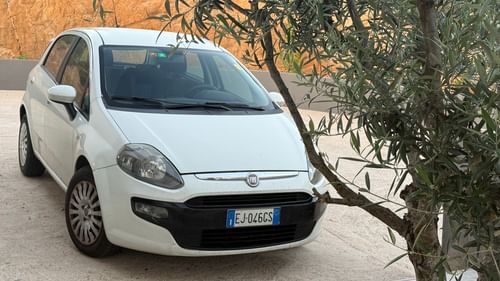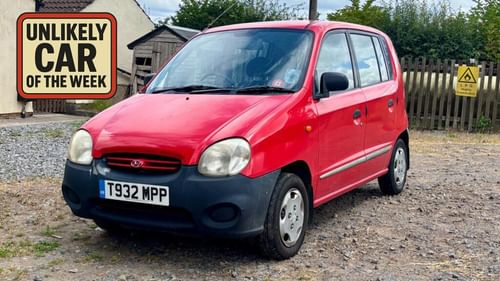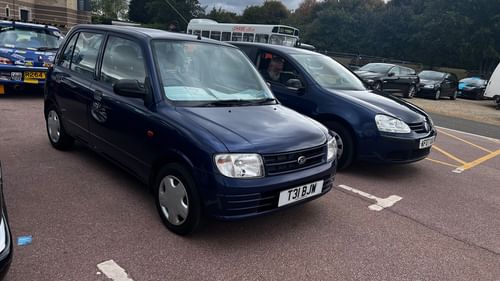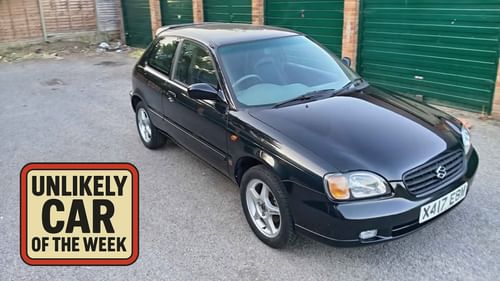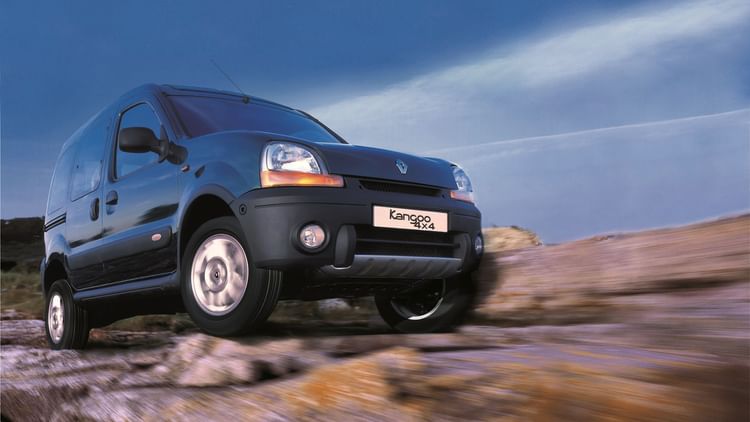
Renault’s rufty-tufty version of the Kangoo was announced as the Trakka, but its name was changed to Trekka, making it sound less like a cereal bar and more like an item of footwear you’d find in Millets. Both would come in handy on a cross-country hike, but only one would be useful when traversing rough ground.
The Trekka 4x4 arrived in the UK in 2002, three years after the launch of the Kangoo passenger car. Renault claimed that its ‘funky off-roader’ allowed people to venture off the beaten track for less than £11,000 (around £20,000 in today’s money). For context, that’s the price of a new four-wheel drive Suzuki Ignis with a 1.2-litre mild hybrid engine. It’s a cracking small car, but it can’t hold a candle to the Kangoo Trekka in terms of practicality and flexibility.
Being based on the standard Kangoo gave it a good head start. Enough interior space to rival many estate cars, a pair of sliding rear doors for ease of access, a huge top-hinged tailgate for easy loading and sheltering from the rain, countless cubbies and pockets throughout the cabin, and sufficient headroom to keep an Isambard Kingdom Brunel tribute act happy, even with their stovepipe hat on. You could even hose out the interior, if your weekend of doing lifestyle things turned messy.
To the Kangoo’s peerless practicality, the Trekka added new bumpers, protective side mouldings, tough alloy wheels, four-wheel drive, 200mm of ground clearance and super-grip traction control. Manufacturers have spent two decades convincing Mr and Mrs Car-Buyer that a slightly compromised crossover would enhance their lives (while impressing the neighbours), but the Trekka offered proper practicality, fabulous flexibility and the opportunity to climb a few mountains and ford the odd stream. Nothing too challenging, but the Trekka’s lightness and narrow track allowed it to venture further off-road than many of today’s expensive and overweight SUVs. All for the price of a supermini or small hatchback.
What Car? was impressed, saying: ‘At last somebody has created a truly useful lifestyle vehicle. It has van space, enough kit to keep it interesting and 4x4 to handle more than you are likely to throw at it unless you own a Welsh mountain farm. In a world of style-obsessives, the only people who will buy the Trakka* 4x4 will be people who actually need the space and ability at an affordable price, not those who want a car that says something about them. This is not stylish couture cardom, this is useful adaptation in a proper package.’
UK sales were measured in the hundreds, with Renault unable to convince enough style-obsessives to divert their attention away from Land Rover and the myriad of jacked-up estate cars with posh badges. Fuel economy wasn’t a strong point, which is why most buyers chose the 1.9 diesel over the 1.6 petrol. Today, there are around 100 in active service, with a similar number listed as SORN. A few are probably in use as field cars and farm hacks, although not at the top of a Welsh mountain.
Not convinced? Please admire the car’s cheery appearance and those marvellous amber indicators. Now imagine the fog lights painted yellow. It’s a magnificent thought.
*The review was penned before the name change, hence the reference to Trakka.
This article first appeared in issue 23 of Classic.Retro.Modern. magazine.

